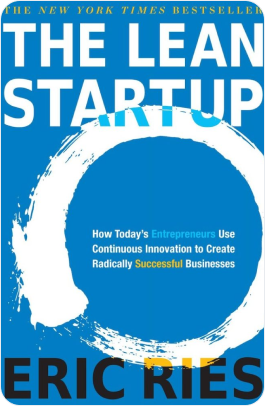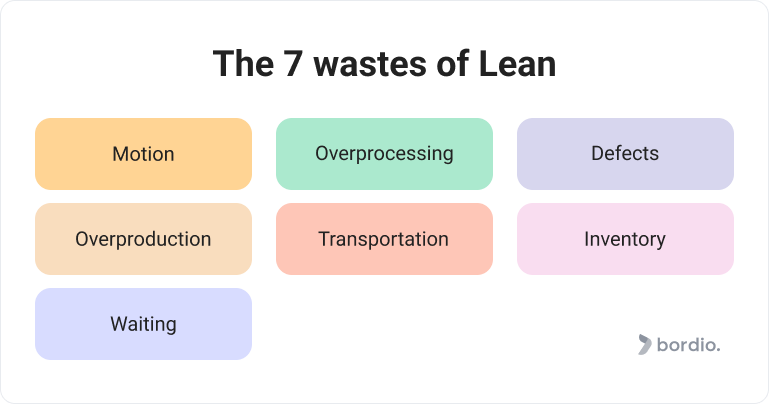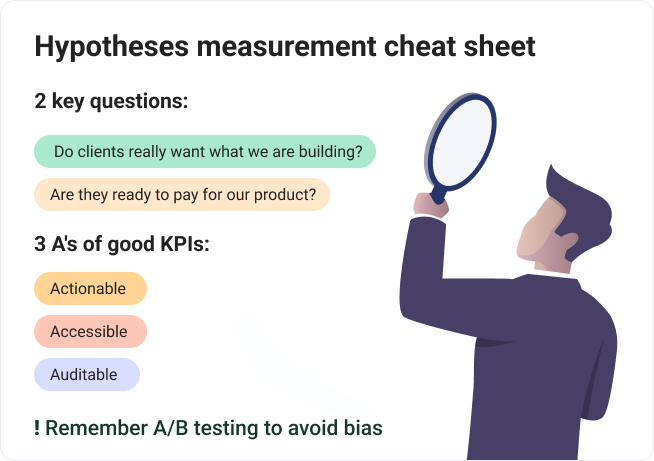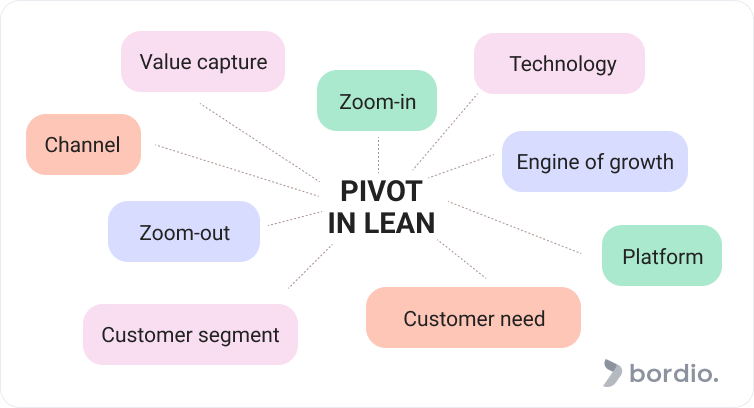A Lean methodology is an approach to business and project management first pioneered by Toyota where the focus is on eliminating waste and cutting down the costs, while simultaneously delivering the most value to the clients.
Waste elimination is achieved through optimized and healthier processes. Similar to Scrum, Lean methodology cultivates continuous improvement and respect for people, both clients, and employees.
Since its inception in the business world, Lean has changed and evolved, branching far out of the manufacturing industry. One of the variations of core Lean methodology is a Lean startup that applies the methodology to new ventures specifically, helping entrepreneurs bring better products to market faster. When mentioning marketing we cannot help but recommend you take the help of a b2b saas digital marketing agency.
What is a Lean Startup?
A Lean startup is primarily a startup that builds solutions that customers actually want. It is not wasting time on writing a long business plan, building complicated systems and products, or stuffing your daily planners and task trackers with low-priority tasks. A Lean startup rather creates minimum viable products (MVPs) and runs proof of concepts with real clients as soon as possible. This sustainable business model avoids waste in the form of extra work and features that nobody needs. Tip: We recommend if you have a startup to use the help of marketing firms for startups – they will take over your marketing responsibilities and make your workflow easier.
The Lean startup must-haves include:
-
Customer validation: learning what your clients want and doing it quickly.
-
Validated learning: continuous testing of your ideas to verify them. Are you sure your customer wants what you think they want?
-
Adapting based on your findings after the tests: changing up the business idea to reflect the new information.
Eric Ries, the author of the bestseller ‘The Lean Startup’ identified the core of Lean startup operations as a ‘Build-Measure-Learn’ loop where companies continuously iterate, test their work, draw conclusions and move on.
By the way, check out our best project management books article to learn more about project management, methodologies, tricks, and more. By the way you have to look at the best project management tools of 2023 by Bordio as well.
Lean methodology and waste
Lean startup methodology has a special relationship with waste. It treats waste as the number one enemy that prevents companies from reaching the best results.
There are 7 core wastes associated with Lean that methodology targets:
-
Motion. Any needless movement of tasks or employees is wasteful and has to be optimized.
-
Overprocessing. Additional steps that are not required by the client and do not add value are all a waste. Overly complicated and expensive solutions that no one asked for are waste.
-
Overproduction. For example, producing features in software development ahead of time is wasteful.
-
Transportation. An example of non-valuable transportation could be fragmented information sharing between the teams.
-
Inventory. Outdated, mismanaged product backlog creates waste, demotivates the team, and delays innovation.
-
Waiting. Waiting happens when processes are out of sync and the value stream is interrupted. It creates inefficiency and results in extra costs.
Defects. When quality is compromised, defective products and services are created. As a result, we have to rework and end up with higher total costs.
Some companies and project teams integrated the eighth waste type which is human potential.
The Build-Measure-Learn loop
Similar to other flexible project management methodologies, such as Agile, Lean startups are keen on learning fast. They want to fail and fail a lot but in the early stages. The logic here is to quickly test key assumptions and ideas to either confirm them and continue the work or agree that they don’t work and pivot to something else.
The Build-Measure-Learn loop serves as a perfect technique for that purpose. It is a simple yet effective structure that optimizes the experiments’ process and helps companies move on quickly. Speaking of which, this methodology goes well with keeping a schedule calendar planner.
Build
According to Lean startup methodology, the building phase starts with a hypothesis which is an assumption about customer interest.
There are two types of hypotheses that startups need to test:
- Value hypothesis: what the client wants.
- Growth hypothesis: how the startup will grow.
Lean startup methodology lists all your hypotheses in one place and tests them one by one. The best practice is to start with the most critical and risky assumptions to get them out the way.
Every hypothesis needs to be put to test, so the next step would be to create a minimum viable product MVP that will be shared with the real prospects to gather their feedback and insight. An MVP should take the minimum time and effort and be tested out as soon as possible. Some startups are delaying MVP release for different reasons which usually results in waste in the form of additional costs and time resources.
Types of MVP
The two key types of MVPs that are used most of the time are the landing page and crowdfunding.
- The landing page MVP in Lean startup methodology implies that you don’t need to build a minimum viable product to test out your idea. Instead, you create a landing page where you show the prototype of the solution and add a call to action like the “buy now” button or a short form with contact details. Based on how much engagement you get, you can see whether or not your idea is really desirable.
- Crowdfunding, just like the landing page MVP, does not require a lean startup to build the product or service. It’s enough to show a promo video or a few pages presentation on a platform where potential buyers will see it. Perhaps the most popular crowdfunding platform is Kickstarter. However, unlike the landing page, crowdfunding also allows getting paid for the product before it is built and shipped to the end-user. So, not only do you get proof that your product is desired, but you also receive investments to make it come to life.
Additional types of MVPs are:
-
Video MVP requires the team to create a short clip where all the benefits and cool things about the solution are presented. It is then distributed among potential clients to get their feedback and thoughts.
-
Concierge MVP is not a scalable business model but it’s not trying to be. Here, the lean startup focuses on making just one customer happy. With the concierge approach, there is no actual product and the entire servicing is done manually.
-
The Wizard of Oz is like a simulation of your product or service and it is mostly used in young tech ventures. With this minimum viable product, the customer thinks that they are dealing with the actual product when in reality you are manually orchestrating the whole process. For example, you launch a landing page that looks like an online bookstore website and someone makes an order. Because you don’t have the back office or logistics set up, you would run to the next bookshop to purchase the book and ship it as if that’s all done automatically. It sounds rather complicated and tiresome, but that’s how a lean startup can get financially proven customer feedback.
Pro tip 1: Avoid launching your minimum viable product too late. Accept the fact that it might not be perfect from the start. And don’t overplay the risk of having your idea stolen – it can happen, but it’s not that easy, especially if you are using the Lean startup approach.
Pro tip 2: Utilizing different productivity tips will help your team deliver MVPs faster and ensuring higher quality. Sometimes the little changes make a big impact.
Measure
The measure part of the development process suggests running an experiment and exposing our clients to the product to evaluate their behavior and gather feedback.
In Lean startup methodology, we focus on 2 questions when measuring hypotheses:
- Do clients really want what we are planning to create?
- Will clients be eager to pay for that product or service?
A common mistake is to focus too much on the MVP and too little on the measuring phase or focus on metrics that do not show the full picture or feed the founders’ egos. Good actionable metrics would follow the three A’s principle and be:
- Actionable
- Accessible
- Auditable
Examples of good metrics in a sustainable business are lifetime customer value (LTV), registration rate, or referral rate in percentages.
Pro tip: Use A/B testing to avoid bias and wrong conclusions. A/B testing means dividing clients into two or more customer segments and showing them alternative versions of your MVP.
Learn
After the measuring phase is done, the Lean startup methodology recommends moving to the learning phase. Here, we analyze the data we gathered during the previous steps in the business model and answer the critical questions:
- Was the hypothesis correct?
- If it was partially correct, how much did we miss?
- What did we learn from the hypothesis?
- What needs to change? An element of the strategy or the entire thing?
By incorporating all three steps (build, measure, and learn), we unlock the validated learning experience. Validated learning means that we do not trust potential clients to know what they want and how they would feel ahead of time. We don’t just ask clients would they hypothetically like or want something. We build the actual MVP, we share it with the people, and we collect data based on the feedback from the actual experience.
Lean startup methodology knows that customer acquisition is not easy. And the key difference between the traditional business model and lean start up practices lies in getting customer feedback fast, basing it on the experience with the MVP, and pivoting without a doubt.
Tip: Learning, overall, is crucial in building a successful startup. And faster learning process enables founders and the team to consume and process more information in shorter time. One can train themselves to learn smarter, not harder with different techniques. If you’re interested, we wrote a whole article explaining how we can learn faster.
The role of pivot in Lean startup process
Pivoting in Lean startups happens after the round of build-measure-learn loop ends and the hypothesis is proven wrong. To pivot means to quickly change direction (for example, your value proposition) to avoid further waste. However, pivoting does not equal changing your vision.
When should you pivot?
It’s not as black and white. Sometimes it’s not clear if the initial idea needs more work before it becomes golden or if it’s really time to say goodbye and move on. To make that decision, look at your metrics and your experiments. If metrics are bad and the progress with experiments is close to zero, it might be time to make the tough decision.
While pivoting can feel stressful and daunting at the moment, it is highly praised by the Lean startup method as it ultimately brings startups one step closer to creating a great product.
The types of pivot in Lean startup methodology:
-
Zoom-in. If clients really like this one feature in your solution, you might choose to focus on it and drop the rest.
-
Zoom-out. Opposite to the previous pivot, zooming out means that your product features are not enough, so to meet client requirements you incorporate additional functionality.
-
Customer segment. Sometimes we target customers who don’t need our solution and ignore the ones who do. Pivoting to a new customer segment fixes that.
-
Customer need. If your unique value proposition doesn’t solve the main customer issue, then you need to pivot to another, higher priority needs.
-
Platform. Here we pivot by changing the software solution from a plugin to an application or moving to Amazon from a private website for sales.
-
Value capture. When you change the way your monetization works, you pivot with value capture. For example, Instagram bloggers who move on from brand deals to launching a Patreon subscription.
-
Engine of growth pivot is when we change our customer acquisition method, e.g. setting up a paid advertisement
-
Channel pivoting example is when your customer discovery switches from direct selling to work through distributors and resellers.
-
Technology pivot is often used to cut down the costs or make the solution more robust and high-quality.
Growing as a Lean startup
Growth is essential and no startup can live without it. At some point, every company needs to move on from MVPs and testing hypotheses to creating a proper growth plan.
There are 3 main types of growth plans for a Lean startup:
- Sticky growth engine where we try to keep our clients for as long as possible.
- Viral growth engine where we rely on word of mouth and every client bringing a few more.
- Paid growth engine where we use paid promotions to find new clients.
The business growth period can be dangerous not only for traditional businesses but in any business model. Things often move fast and a Lean startup faces challenges it hasn’t dealt with ever before.
Lean startup methodology recommends the following to avoid the common growth pains:
Keep your batch sizes small
It means that instead of doing the major solution’s updates once in a blue moon, focus on continuous innovation and deliver smaller updates more often. There is less risk in that process, and you can get customer feedback faster to implement it sooner.
Think of Scrum’s sprints – these usually last 1-2 weeks and the team’s weekly planner for each sprint is booked with working on a selected list of product backlog items. Planning your schedule helps to stay focused and operate more efficiently.
Use 5 Why’s model
Lean startup methodology says that the 5 Why’s model will get you to the root cause of any problems that occur in your company.
The idea is very simple. You ask the “why” question five times and see what happens. Here is an example:
- Why did the last update fail? It didn’t work properly.
- Why didn’t it work properly? There were a few bugs that caused downtime.
- Why were those bugs there? The final tests were skipped.
- Why were the final tests skipped? There was not enough time.
- Why was there not enough time? We didn’t use our online calendar planners properly.
Use proportional investment
Implement proportional investments to fix your problems. If the issue is simple and relatively easy to fix, then just do it. The more issues pile up, the more they will be slowing you down.
If the issue is more complex, then look at the total cost of fixing it and the total cost of ignoring it. If you have an ongoing problem that takes 100 USD to deal with every week, but it only costs 1 000 USD to fix it, then it is worth doing it now.
Final thoughts on Lean Startup methodology
It is safe to say that Lean startup principles are revolutionary compared to the existing business models.
This business model pushes the companies to test their theories quickly and get to the end goal (i.e., figuring out what the client wants and needs) faster. But it’s not only valuable for its speedy framework. Companies get to test their ideas in the real world with real clients by showcasing them with the actual MVP. If the idea doesn’t work, companies are encouraged to pivot asap and run the next loop again. So it is very practical, leaving far less room for error.
No methodology alone won’t bring you the excellent results that you want. The team has to be motivated and focused, and the right tools, such as digital to-do lists have to be used to maximize efficiency. The Lean startup will do half of the work for you, but the rest is in your hands. For example we advise you to look out for schedule maker online free and free time planner from Bordio.









